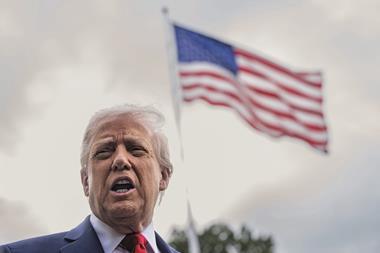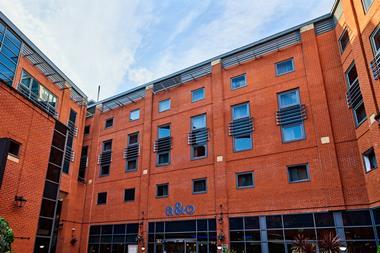GERMANY – Union Investment has made its first two purchases for a newly launched GOEF for institutional investors – an office building in Darmstadt and one in Frankfurt – both for an undisclosed sum.
The first acquisition was the Space 20 in Darmstadt, which was completed in 2012 with a DGNB Silver certificate and is fully let.
In Frankfurt, the office building is situated near the main train station, and the main tenant is the Deutsche Bahn.
Fabian Hellbusch, head of real estate marketing and communication at Union, told IPE: "We could see ourselves issuing more GOEFs for institutions."
He noted that the investors in the fund so far had been foundations, church organisations and savings banks groups Volksbanken and Raiffeisen.
Despite new regulatory requirements limiting liquidity in the fund structures, the market share of German open-ended real estate funds, or GOEFs, has recently increased – not only through assets from retail clients but also from institutions.
In October last year, Union successfully launched a new GOEF just for institutionals, the UniInstitutional German Real Estate, which was "three times oversubscribed within five hours", according to the company.
Other institutional investors such as Pensionskassen and insurance-based Pensionsfonds can no longer invest in these vehicles due to their restricted liquidity.
This puts pressure on other fund providers with these kinds of investors, and, according to Michael Schneider, managing director of service at KAG IntReal, the pressure on GOEFs with institutional investors only will increase in the coming months.
"Many institutional investors are now excluded from investing in these vehicles, and the regulatory requirements for GOEFs – valuation regulation, for example – are increasing," he said.
Some providers are therefore choosing to liquidate their funds.
But IntReal learned another way to keep GOEFs in its portfolio from Warburg-Henderson and Pradera, in which only institutionals were invested – it converted them into open-ended Spezialfonds.
"After the conversion, Warburg-Henderson was able to collect fresh money for the fund," Schneider added.
However, he conceded that the conversion had been difficult, with all investors having to agree.
But he said he saw further potential for conversions, with around 12 GOEFs with only institutional investors still on the market.
He said about one-quarter of the total volume of GOEFs was "frozen" at the moment because many providers had to close their funds in the wake of the financial crisis.












